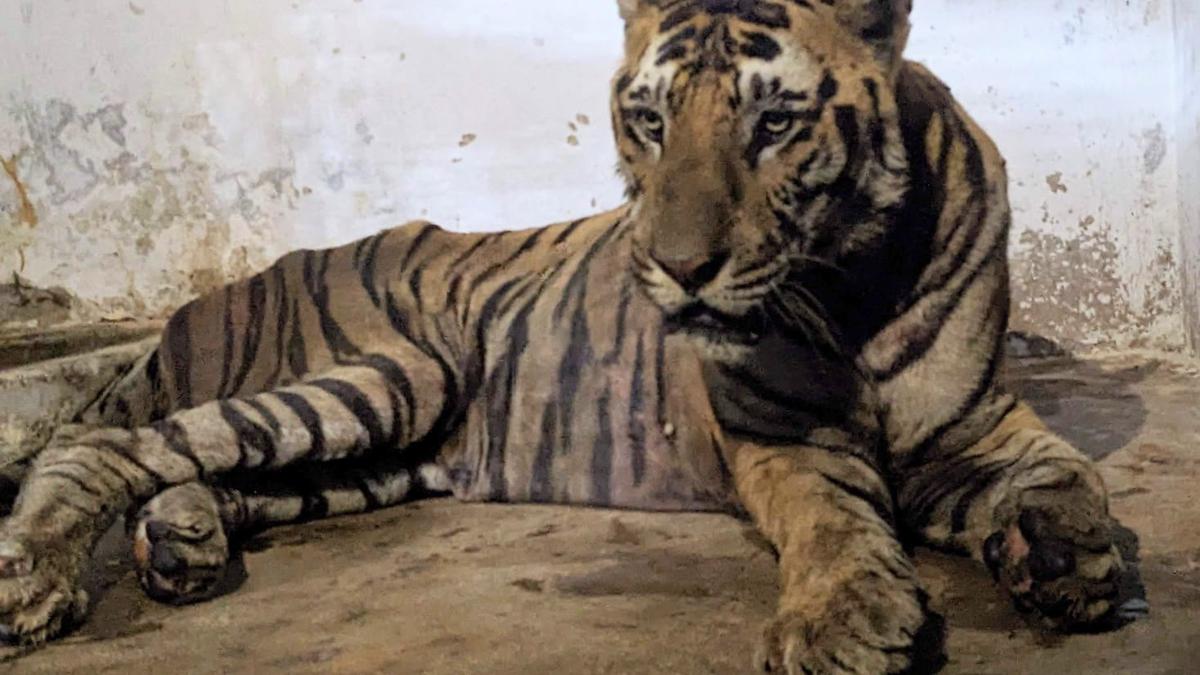
Tiger captured in Kanniyakumari recuperating well at Vandalur zoo
The Hindu
A tiger found injured after capture by Forest Department officials in Kanniyakumari is recovering well at the rescue centre at Arignar Anna Zoological Park, Vandalur
A tiger found injured after capture by Forest Department officials in Kanniyakumari is recovering well at the rescue centre at Arignar Anna Zoological Park, Vandalur.
The tiger, estimated to be 13 years old, was caught by forest officials on August 9 after it killed cattle in areas around Chittar Dam, Kanniyakumari. At least 10 goats were killed by the tiger in a span of 40 days. Owing to the injuries it had sustained, the tiger was brought to the rescue centre at AAZP a day after its capture.
According to officials, the tiger was in a bad shape initially with multiple injuries and a deep wound with pus formation, which was debrided by veterinary doctors at the rescue centre. Severe tick infestation and diarrhoea were some of the initial complications. “The tiger is being constantly monitored and the wounds are healing. When it came it wasn’t able to stand, now it is standing and walking,” said Manikanda Prabhu, Assistant Director, AAZP.
It may take another month for the animal to fully recover, the officials said. However, as the tiger was of advanced age authorities had decided not to release it back into the wild. “It has lost its canines and claws. So, it will again go for easy kill like cattle or humans and cause issues,” said Srinivas R. Reddy, chief wildlife warden and Director, AAZP. Compared to its condition when it was brought it, Mr. Reddy said the tiger was doing better and recuperating well.













